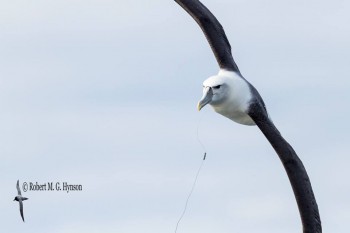Igor Debski (Department of Conservation, Wellington, New Zealand) and colleagues submitted a document on the distribution of threatened New Zealand seabirds in the Pacific to the 12th Regular Session of the Scientific Committee of the Western and Central Pacific Fisheries Commission (WCPFC) in Bali, Indonesia this August.
The document’s abstract follows:
We present a summary of the most relevant and up to date distributional information for New Zealand breeding seabird species identified as at highest risk from fisheries bycatch. The foraging range of these species is overlaid with the spatial application of CMM 2012-07 to mitigate the impact of fishing for highly migratory fish stocks on seabirds. Building on information previously considered by the Science Committee, we assess how fishing impacts can best be mitigated for these most at-risk seabirds, with a particular focus on the spatial application of mitigation in the southern Pacific.”
More information on submissions to recent WCPFC meetings here.

A Shy Albatross trails a fishing line, photograph by Robert Hynson
Reference:
Debski, I., Freydís Hjörvarsdóttir, F. & Knowles, K. 2016. Distribution of highly at-risk New Zealand seabirds in the Western Central Pacific Fisheries Commission area. WCPFC-SC12-2016/ EB-WP-09 Rev 1. 7 pp.
John Cooper, ACAP Information Officer, 30 September 2016

 English
English  Français
Français  Español
Español